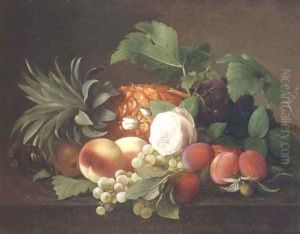Alfrida Vilhelmine Ludovica Baadsgaard Paintings
Alfrida Vilhelmine Ludovica Baadsgaard was a Danish painter born on December 24, 1840, in Copenhagen, Denmark. She was known for her still life paintings, particularly her exquisite and detailed depictions of flowers. Baadsgaard's work is characterized by its fine brushwork and vibrant use of color, showcasing a strong influence from the Dutch floral still-life tradition.
Baadsgaard's artistic journey began under the guidance of her father, Frederik Ferdinand Helsted, who was also a painter. She later studied with several other prominent Danish artists, including Jørgen Roed and Frederik Christian Lund. Despite the limited opportunities for female artists during her time, Baadsgaard managed to cultivate a successful career as a painter.
Throughout her life, Baadsgaard exhibited her work at various venues, including the Charlottenborg Spring Exhibition, where she was a frequent participant from the 1870s onwards. Her paintings were well-received by critics and the public alike, and she became one of the few women of her generation to gain recognition in the Danish art scene.
Baadsgaard's contributions to art were not limited to her own practice. She was also involved in the education and promotion of other female artists. She was a member of the Danish Women's Society and worked towards improving the conditions for women in the arts.
In her later years, Baadsgaard continued to paint and exhibit her work. Her dedication to her craft and her ability to adapt to changing artistic tastes helped her maintain a prolific output. Alfrida Vilhelmine Ludovica Baadsgaard passed away on July 24, 1934, in Copenhagen, leaving behind a legacy as one of Denmark's notable female painters of the 19th and early 20th centuries. Her works remain appreciated for their delicate beauty and are held in private collections and museums, as testament to her skill and passion for art.
